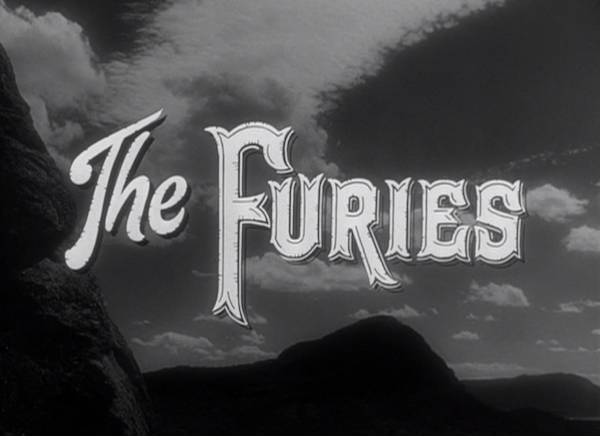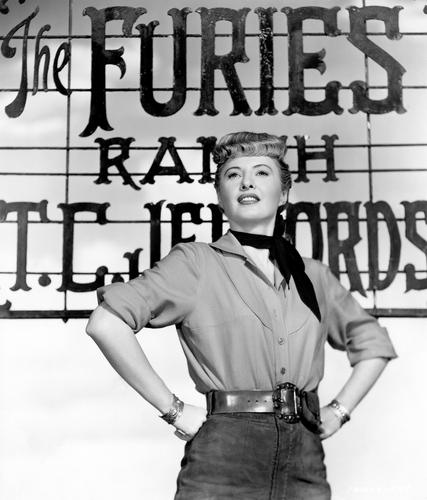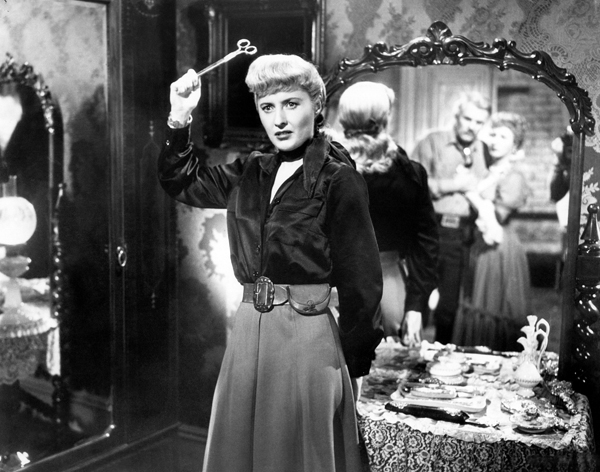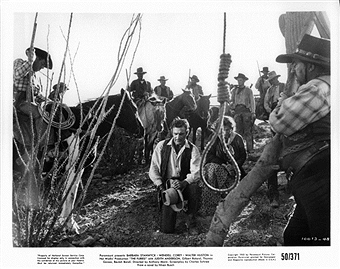|
|
Images for Craig White's Literature Courses |
|
The Furies (1950)
genres: western, epic, psychological drama
based on 1948 novel The Furies by Niven Busch
compare Aeschylus's Oresteia, esp. part 3 The Eumenides a.k.a. The Furies
|
|
|
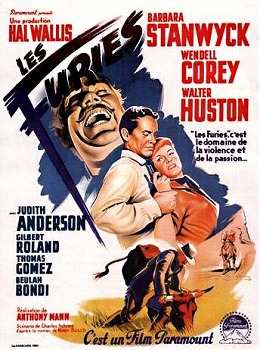 |
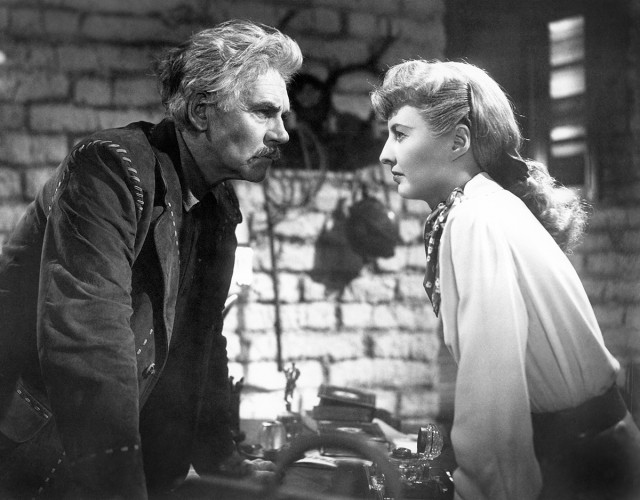 T.C. Jeffords & Vance Jeffords = Agamemnon & Electra |
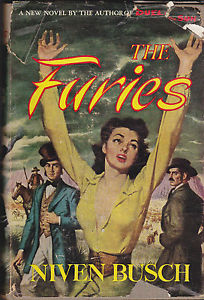 |
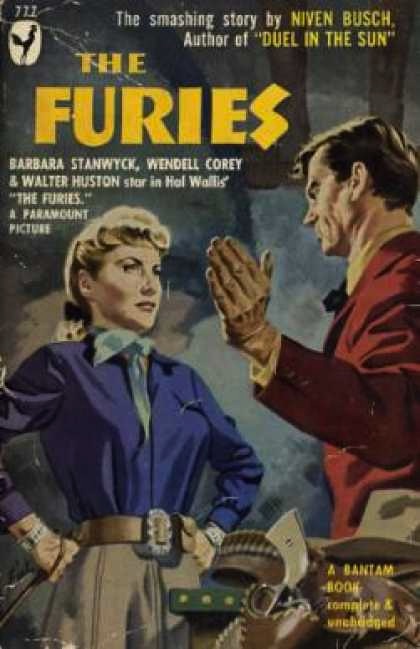 |
Similarities to and differences from Aeschylus's Oresteia
|
The story takes place in New Mexico in the late 1800s instead of Greece during the Mycenean era. T. C. Jeffords is a wealthy cattle baron of a ranch called "The Furies," comparable to Agamemnon as ruler of Argos. As Agamemnon's family line inherited the kingdom through murder of rivals, Jeffords gained the land of The Furies by taking over the land of the Mexican Herreras and by killing a man named Darrow who owned adjoining land. As Electra appears devoted to the memory of her father Agamemnon, T.C.'s daughter Vance is devoted to her father. The novel's and film's production in the mid-20c locates it to be influenced by the so-called Electra Complex, which was briefly popular then but since discredited. Jeffords's wife, Vance's mother, is already long dead when the film opens with Vance in her mother's bedroom, which T.C. has declared off-limits not to be visited or disturbed, but Vance behaves casually there, taking over her late mother's jewelry and clothes. Vance and not her brother Clay is regarded as the child strong enough to inherit The Furies. As Orestes is dominated by Electra, Vance dominates Clay (though he only appears briefly).
|
|
|
When T.C. re-marries, daughter Vance objects and later disfigures her stepmother by attacking her with scissors. As Clytaemnestra consorted with Aegisthus to kill Agamemnon and take over the kingship, Vance allies with the son of Darrow, the man Jeffords killed to take over his land, in an effort to win The Furies for herself.
|
|
|
A Mexican American family, the Herreras, contend with Jeffords for ownership of the land, as Aegisthus's family contends with Agamemnon for kingship of Argos (also comparable to family disputes in O'Neill's Desire Under the Elms, where different family lines fight over ownership of a farm. The best candidate for the chorus would be the Mexican American community, who witness the Anglo characters' comings and goings, mostly silently. Especially the Herrera family remembers the past and Jeffords's stealing of their land. Juan Herrera, Vance's childhood friend, stops his brothers from killing T.C.: "I am the elder. Since when has the word of the elder not been the word for all?" T.C. nonetheless hangs Juan for horse-theivery. Before being hanged, Juan and the other Herreras kneel and pray in Spanish, somewhat resembling Nietzsche's description of the chorus as an un-individuated mass. The scenes involving the Herrera family are the film's best, as the mother appears primitive and vengeful, rolling bolders down on Jeffords and his posse. She is described by Jeffords as "the old Herrera witch." A "fury of vengeance" appears at the end of the story, when the slain Herrera's mother kills T.C. Jeffords.
|
|
Odd notes:
The "T" in T.C. Jeffords stands for "Temple."
The Greek hero Theseus, who appears in our tragedies of Hippolytos and Phaedra, was famous for having slain the Minotaur (half-bull, half-man) in the Labyrinth of Crete. In a big cattle round-up near the end of the movie, Jeffords spots a wild bull, which his men refer to as "the bull of the Furies," whom Jeffords then lassos and wrestles to the ground.
trailer (note use of "spectacular")
scene from Furies with student voice-over
tragedy nearly always concerns families, esp. inter-generational conflicts (though admittedly such conflicts are often grotesquely intensified).
Quotable lines:
Darrow to Jeffords: You stop telling lies about me, and I'll stop telling the truth about you!
Saloon girl to Vance: "We haven't met before. My name is Dallas Hart. I'm new in town, honey."
Vance to saloon girl: "Honey, you wouldn't be new anyplace."
Goodreads on novel (1948)
![]()


